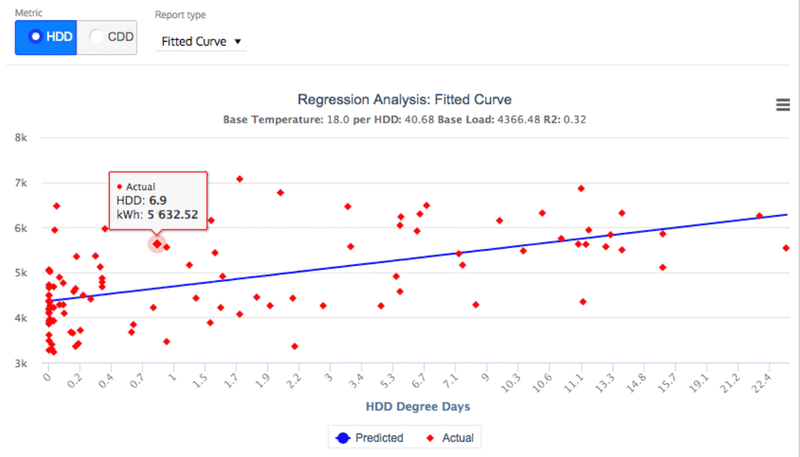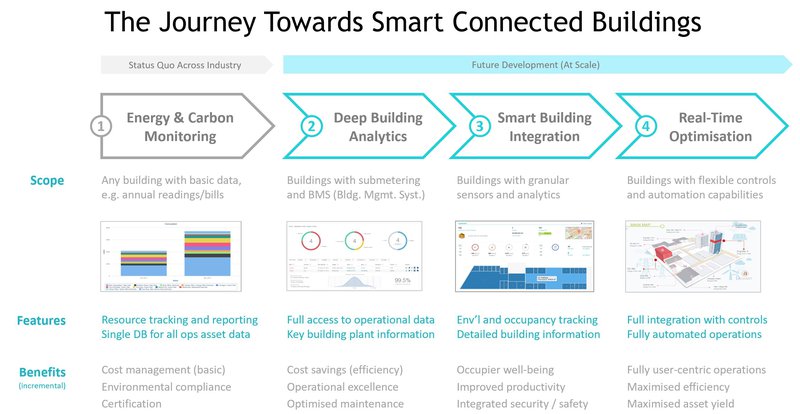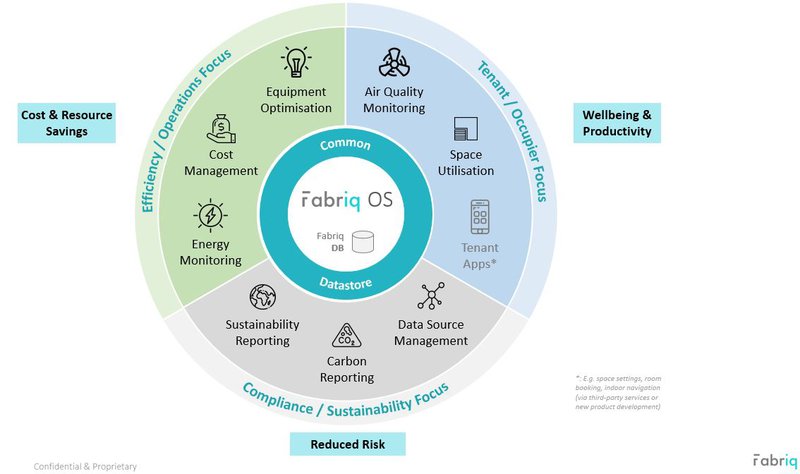
Sustainable buildings: A pragmatic approach to joining the digital transformation
39% - this is a figure the real estate sector knows well too well. And this must change.
According the UN’s Global Status Report, the built environment makes up approximately 39% of the global energy-related carbon dioxide emissions. In order to be on track to meet global climate ambitions set forth in the Paris agreement, we need to see a 30% reduction by 2030. Global buildings sector energy demand rose 7% from 2010 to 2019, so drastic action is needed.
Forward looking businesses all over the globe have been going through a complete re-thinking of their business processes, digitalising their operations, in order to create better products and services, drive efficiencies and become more profitable while being more sustainable. As it turns out, one unintended consequence of investing in the digital transformation of the business is the fact that these businesses are now better placed to manage the current COVID-19 crisis remotely. The term has become much of a cliché, but it is essential for businesses to strive in the modern world. At its heart, a digital transformation can be defined as the use of technology to fundamentally change business performance. And, now, more important than ever, the digital transformation has enabled businesses to become better placed to survive significant disruption (or become more anti-fragile if you are a Nassim Taleb fan). It is time for sustainability leaders to follow suit.

At the end of the day it all comes down to data. The ability to track and measure key metrics has given businesses an edge through immediate feedback loops informing decision makers on how and when to act. Utility consumption data must be one of the most underutilised resources in the fight against climate change. Despite the smart meter roll out taking longer than expected, those that have been installed are only being read once a month to improve the accuracy of billing. The true value of a smart meter comes as its ability to shine a light on building performance and operational trends through high resolution data at half hourly granularity, provided on a day+1 basis.
Whilst climate change is not new, sustainability experts are a relatively new professional breed. Energy consultants on the other hand have been around for a while when businesses understood the impact of energy efficiency on the bottom line, long before ESG became a talking point in board rooms. The problem is that many of the approaches used by energy managers of large companies and consultancies are stuck in the 20th century. Despite monumental strides forward in sustainable building design and smart building technology, the approach itself to energy management is long due a digital transformation.
Digitalisation 121: Making the most of current set up

Let’s face it - before smart meters, energy managers had a difficult time carrying out any form of analysis of energy data. The only way of collecting data was through manual meter reads. Photographs of handwritten readings with added or missing 0’s rendered them useless ‘data points’. Therefore, the only way to assess a site’s performance was to carry out a full on-site energy survey. This ranged from checking boiler flow and return temperatures to counting every light source in the building and noting the wattage of each.
So, whilst this was ‘the’ way to do it, professionals were well aware of its limitations:
- It was highly time and cost intensive, especially when you consider surveys taken across multiple territories.
- It provided a very static view of the building performance, a snapshot in time, literally at the day of the on-site survey.
As such, there is no doubt that the introduction of smart meter and automatic meter reading technology is a game changer. Energy managers now have access to high resolution data that can be used to provide visibility of site performance 24 hours a day, 365 days of the year. Smart building technology such as wireless environmental sensors can provide energy managers with a wealth of information that was unimaginable a few decades ago. So, one could only expect that the energy management practice would have also evolved quite a bit. But old habits die hard. The practise of energy management is plagued with inertia, stuck in a loop of ‘how we’ve always done it’. It is time for change.
Digitalisation in the energy sector: A practical step-by-step approach

STEP 1: Adopt a ‘data-first’ approach to energy management
The first opportunity to make use of smart meter data is to engage in a pre-survey analysis to identify potential issues before visiting the site. However, to become a truly data driven consultant, one must put insight and analytics at the heart of their decision making. How about starting to normalise the portfolio by a common explanatory variable that has the most significant impact on usage, such as floor areas? Once apples-to-apples are compared by analysing performance on a kwh per square meter basis, one can home in on the top 10% worst performers. Next it is to look for reasons why those sites find themselves at the top of the list; is it because they are older buildings, have less efficient heating systems, longer operating hours or were they the only sites left out of the LED roll-out in previous investment cycles?
STEP 2: Build a centralised database of asset information and site characteristics
To maximise your data, it is essential to bring together as many explanatory variables as possible. One can collect them by exception as detailed above...or, in order to build a statistical model of site performance across the portfolio, this information must be accessible from a central location, not in a ring binder from the 80’s in a plant room cupboard! This information is invaluable. Energy consumption is inherently dynamic. Without understanding what influences usage at a granular level, one is often left in the dark.
STEP 3: Add colour to the analysis by engaging with on-site experts and share the insights already gained
Once all explanatory variables are normalised and discounted across the poorest performing sites, it is time to dig a little deeper. Before rushing in to booking the two full days on site, train tickets and overnight stay, how about using digital ways to connect on-site engineers or facilities managers who can provide another layer of information to support the analysis. A phone / Zoom / G Meet (and the list goes on…) survey can be a great way to resolve issues without the need for travel. Some issues are as simple as resetting an air-conditioning control unit or switching a boiler from ‘in-hand’ back to ‘auto’. To make things happen, the winning formula is to combine the knowledge of energy management and building performance with the day to day operational understanding.
STEP 4: Think LeanTM and reduce ‘batch sizes’
Traditionally, energy management practice applies a ‘waterfall’ type of approach to project management. When the detailed energy savings report gets to board level approval phase, it can take months before it gets any traction. By adopting LeanTM and AgileTM practices, energy managers can work in a more iterative manner with smaller portfolio batches and start making an impact much quicker. Once the first opportunities are identified, start progressing them through the stages so that those opportunities move through the process faster. Be prepared to change requirements and alter direction or completely pivot. In all honesty, when was the last time a Gantt chart of 157 energy surveys ran on schedule?
STEP 5: Create cross functional teams from various sectors and industries
Whether we like it or not, digital transformations transcend traditional organisational structures and team org charts. In business, we see the rise of customer success functions and growth teams adopting data driven approaches to adapt their businesses. Sustainability is no different. Often there are several groups working towards the same organisational goal but in complete isolation of each other. Sustainability consultants, energy managers, analysts, data scientists, engineers, building control specialists, facilities managers and financial accountants must come together and work as a cross functional unit. Because, while data brings transparency, it is no substitute for lack of cooperation. With analytics platforms like Fabriq, the benefits of surfacing the right data and inviting relevant collaboration are maximised in a centralised cloud-based database.

It is by working together to connect and optimise the world’s buildings that we can achieve significant impact on reducing climate change. That has always been our vision and we are getting closer to achieving it every day with the help of forward-thinking companies embracing digital r(e)volution.
If unsure about how and where to start, let's grab coffee and begin the conversation.

